

Sign in to your Collider account
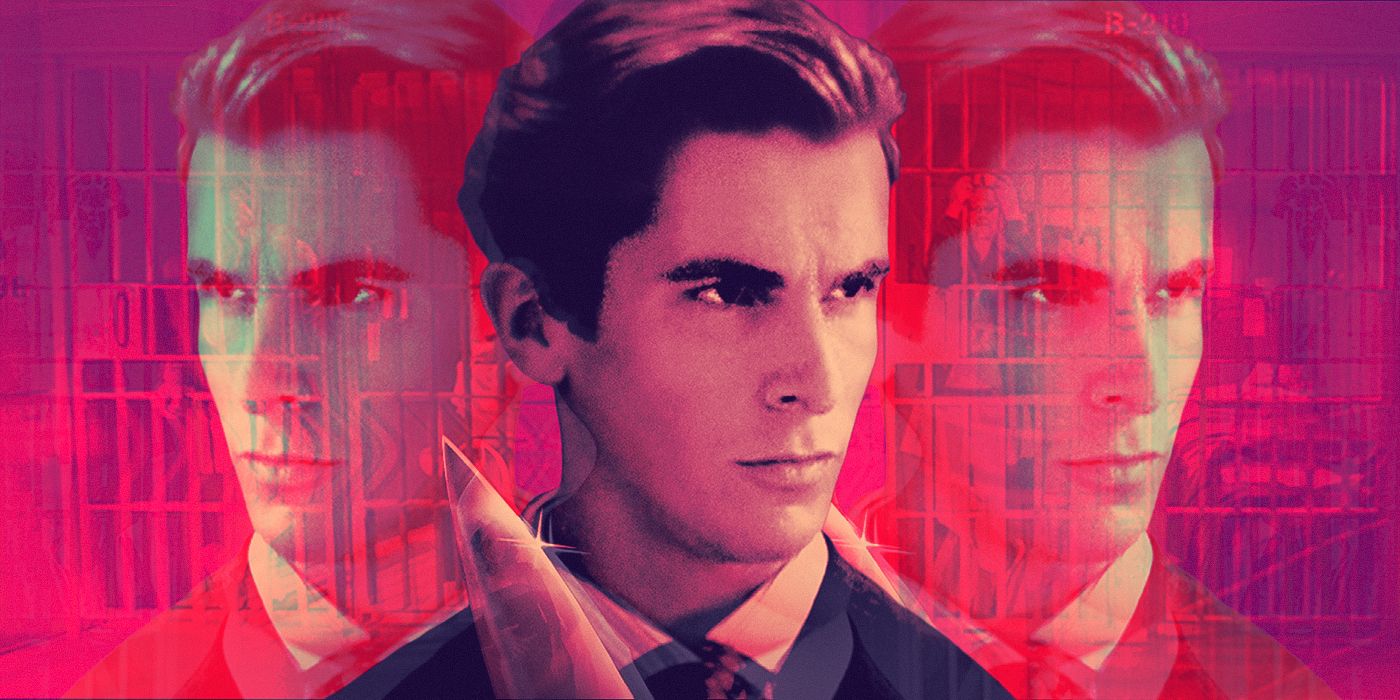 Custom Image by Jefferson Chacon
Custom Image by Jefferson Chacon
The Big Picture
- The ending of American Psycho sparks theories about whether Patrick Bateman's crimes were real or just sadistic fantasies.
- Writers of the film chose to make it ambiguous, but intended for viewers to believe that Bateman committed the murders.
- Regardless of the truth, Bateman's psychotic nature is evident in his actions and drawings, suggesting he is a ticking time bomb.
The ending of the black comedy horror film American Psycho has been the subject of many heated debates among cinephiles. Directed by Mary Harron and based on Bret Easton Ellis's 1991 novel of the same name, American Psycho follows Patrick Bateman (Christian Bale), a wealthy New York City investment banking executive by day and a psychopathic serial killer with an eclectic music collection by night. After going on a murderous rampage over the course of the movie, things start to take a strange turn when Patrick stops at an ATM that has an unusual request: "Feed me a stray cat."
What Is 'American Psycho' About?
American Psycho is a movie that’s hard to forget much like the novel it’s based on. In simple terms, it’s about an affluent New York City investment banker who’s also a serial killer. But, the fact is that American Psycho is a far cry from simple. Bale fully embodies the role of Patrick Bateman, and his performance is considered legendary. He’s charming and polished on the outside but underneath lies this animalistic violence. It’s this strange mix that keeps viewers both horrified and hooked. Overall, Bateman represents the clash between surface-level perfection and inner chaos.
His actions escalate as the plot unravels, and the beginning of the chaos starts with calculated killings, like the apparent brutal murder of his colleague Paul Allen (Jared Leto). After which everything spirals into pure impulsive violence and chaos. Underneath the horror and confusion, American Psycho is a critical look at capitalism, corporate greed, and the emptiness that can come with wealth.
What Happens at the End of 'American Psycho'?
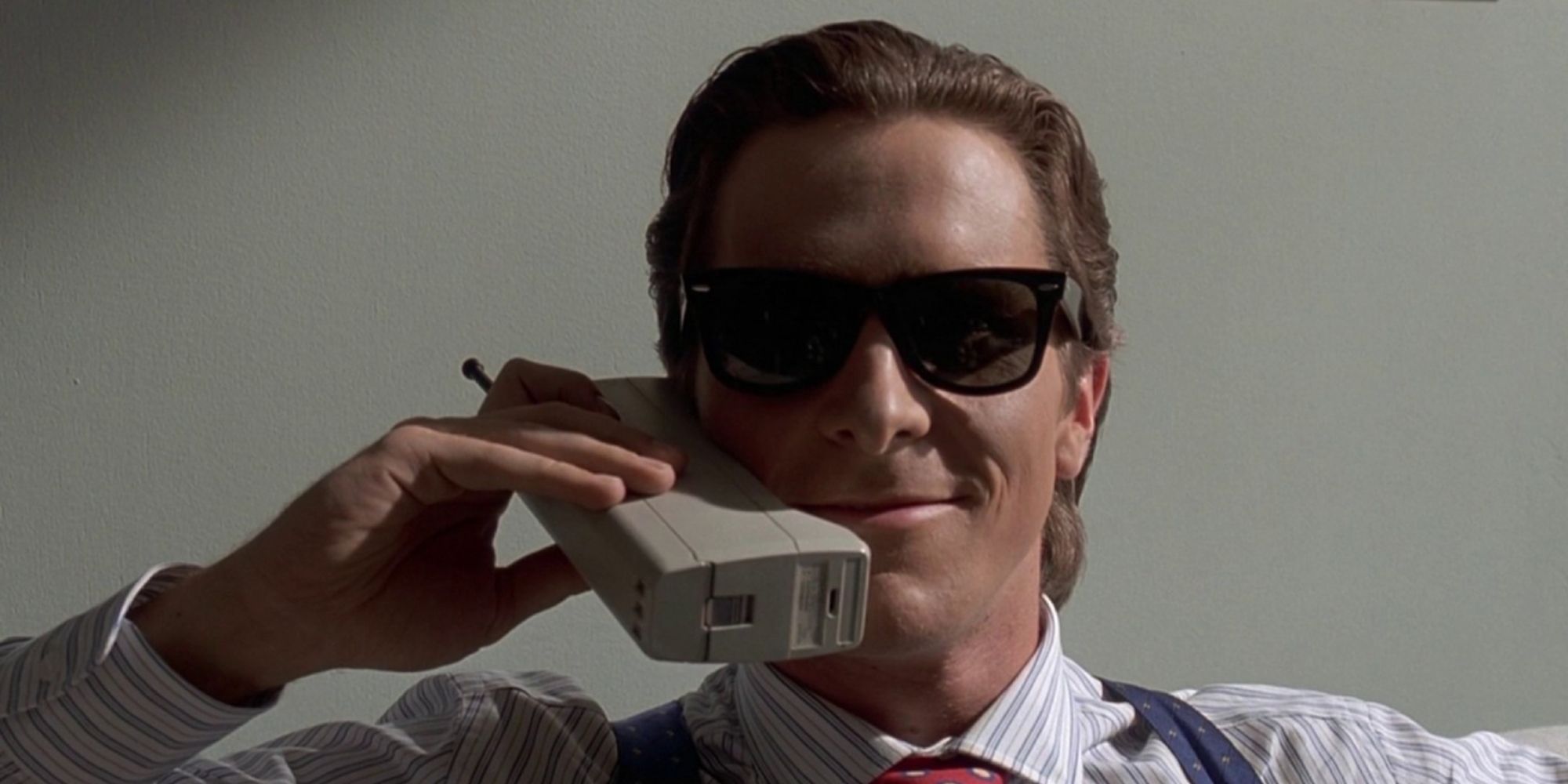 Image via Lionsgate
Image via Lionsgate Through much of the film, we can suspend our disbelief that Patrick is somehow getting away with his brutal crimes scot-free — American Psycho is a satire after all. But from the moment Patrick scoops a stray kitten off the ground, prepared to shove it in the slot, the film starts to take a turn that sparks the question of just how much of Patrick's crimes up to this point have actually occurred. It’s this puzzling conundrum that gives American Psycho its overall unsettling air. The story is told from Patrick's perspective, and Patrick quickly becomes an unreliable narrator in these crucial last 30 minutes of the film. As he holds the poor, unsuspecting kitten up to the ATM slot, a passerby, justifiably horrified, demands to know what he is doing. Without a moment of hesitation, Patrick shoots the woman and takes off, the cops suddenly hot on his heels. He finds himself in an alley blocked off by cops, and in a sudden shootout, Patrick somehow manages to take down a few cops and blow up a cop car. Based on the bewildered look on Patrick’s face, he is just as stunned as we are at the turn of events.
Patrick flees to what he mistakenly thinks is Pierce & Pierce. Realizing his mistake, he kills the security guard and the custodian before bursting into the — strikingly identical — correct building. Up in his office, Patrick is in a panic. He calls his lawyer Harold (Stephen Bogaert) and confesses to his crimes in a state of hysteria, weeping and laughing to Harold's answering machine. He tells him he has killed somewhere between 20 and 40 people, but he's lost count. He admits to taping a lot of his crimes, eating some of his victims' brains, and even trying to cook them. Specifically, he cops to killing Paul Allen with an ax to the face, sobbing to Harold that his body is currently dissolving in a bathtub in Hell’s Kitchen. He tells Harold that he'll meet him at Harry's Bar the next day when he gets back.
The following morning, Patrick rises and puts on one of his many meticulously pressed suits. Covering his nose and mouth with a face mask, he enters Paul’s apartment. Expecting to find the mutilated body parts he has stored, he is completely dumbfounded to find that it's vacant and up for sale. A realtor approaches Patrick, who pretends to be a potential buyer. When he asks if this is Paul Allen's place, she looks at him with something akin to suspicion and tells him he's mistaken, and that he should leave and never come back.
The End of 'American Psycho' Is Meant To Be Ambiguous
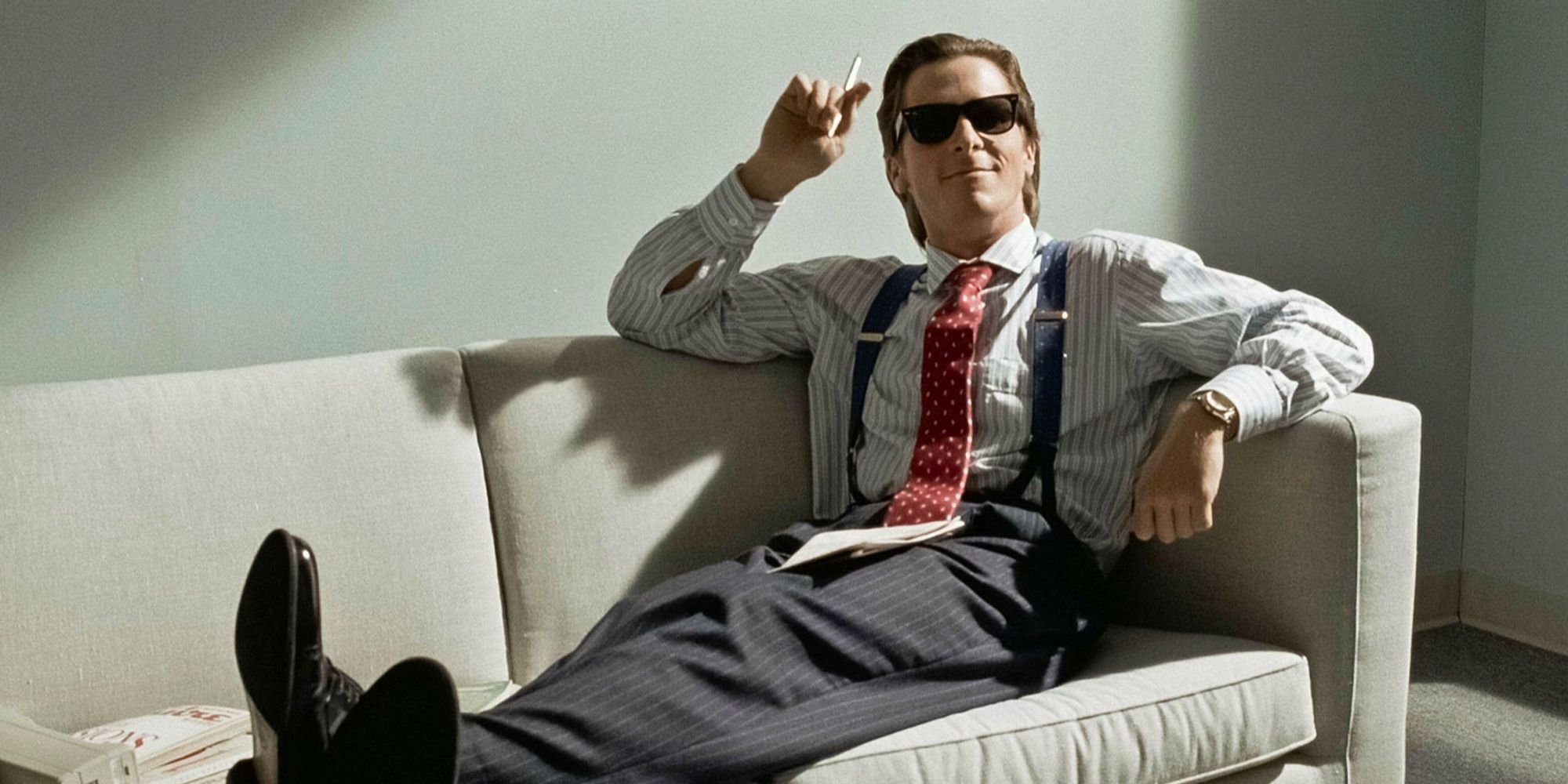 Image via Lionsgate Films
Image via Lionsgate Films Patrick leaves and calls his assistant Jean (Chloë Sevigny) from a payphone, hysterical and unhinged, to tell her he doesn’t think he’ll make it to the office this afternoon. Jean, obviously concerned about this bizarre phone call from her boss — a man she has quietly been pining over — pulls out his appointment book from his desk drawer and begins to flip through it. To her horror, the pages are covered front to back with disturbingly detailed drawings of naked women, murdered and mutilated. Looks like you dodged a major bullet, Jean.
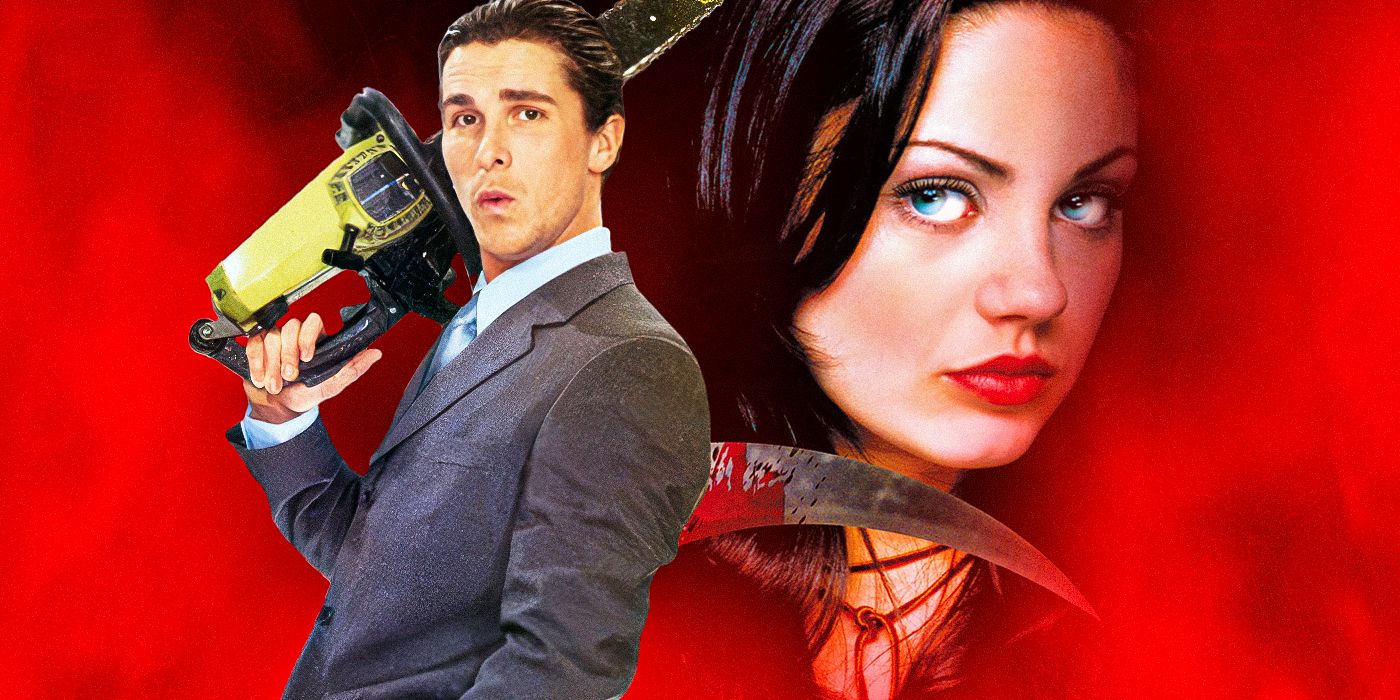
Related
The ‘American Psycho’ Sequel Was So Bad, Its Star Denounced It
The author of the original book, Bret Easton Ellis, isn't too fond of it either.
Meanwhile, Patrick arrives at Harry's Bar. When he spots Harold and approaches him, Harold, who confuses him for someone named "Davis," tells him that the message he left for him on his machine was absolutely hilarious, clearly thinking the whole thing was a joke. Harold calls "Patrick Bateman" a "boring, spineless lightweight" who would never be capable of murder. Patrick, looking desperately confused, pleads with him that he is Patrick Bateman, and he did kill all those people. And not only did he kill Paul, but he liked doing it. Harold tells him that simply isn't possible because he just had dinner with Paul in London a few days ago.
Confused and unsettled, Patrick returns to his table where his friends are watching Ronald Reagan give a televised speech and debating whether he's actually a "harmless old codger" or a lying psychopath. As the camera slowly zooms into Patrick's eyes, Patrick delivers his chilling final monologue as a voiceover in which he realizes that his crimes have gone unpunished and his confession has meant nothing.
Was It All in Patrick Bateman's Head?
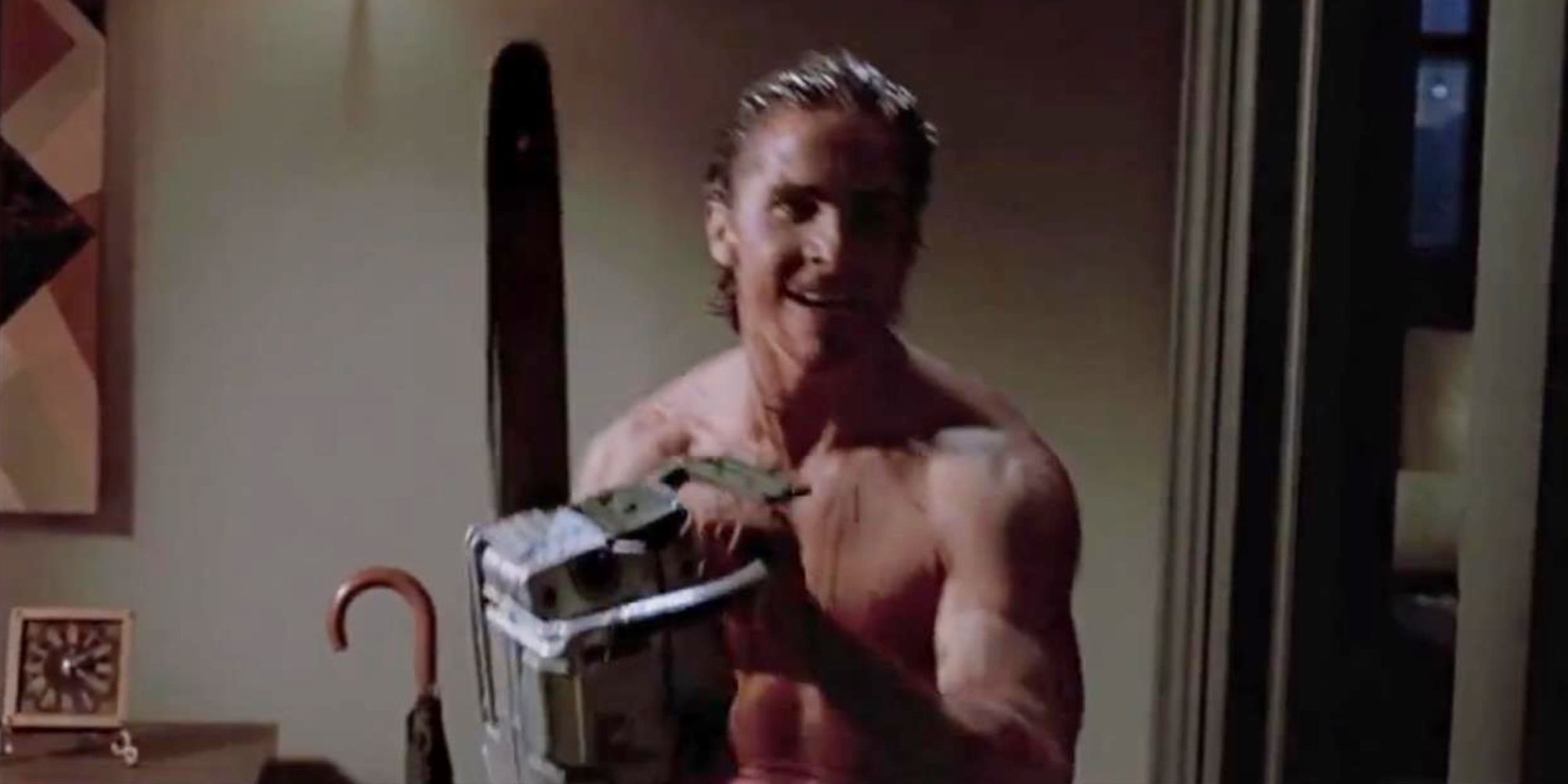 Image via Lionsgate Films
Image via Lionsgate Films So, was it all in Patrick Bateman's head? The ending of American Psycho has sparked tons of theories. Is Patrick Batemen an actual serial killer, or is he a businessman harboring sadistic fantasies that he never fulfills? A popular theory is that Patrick did in fact kill everyone he copped to in his phone call to Harold, including all the ones we saw with our own eyes — that is, except for Paul Allen. This theory is most likely the closest to the truth when we take into account Paul Allen's vacant apartment, with no signs of Patrick's murderous rampage to be found. This theory would also explain Harold's claim that he just had lunch with Paul Allen, so there is no way Bateman could have killed him.
On the flip side, another theory is that Patrick killed everyone, including Paul Allen. We do know that Patrick has a vendetta against Paul Allen, yet another pretentious yuppie with a superior business card. It is also possible that Harold had lunch with someone he thought was Paul Allen — we know how common it is for Bateman's superficial crowd to mistake each other for someone else. The first time we see Paul Allen — and then for the remaining time he's in the movie — he mistakenly refers to Patrick Bateman as Marcus Halberstram, who Patrick tells us also works at P&P doing the same exact thing he does. They also dress similarly and go to the same barber. " Patrick is so invisible in a sea of yuppies and phonies that he can get away with murder. Each interpretation shows us that the real horror might be a world too wrapped up in itself to care, as the pursuit of wealth and status turns people into soulless beings who are “not really there.”
What do the film writers say? In a 20th anniversary interview with Moviemaker with Guinevere Turner, who co-wrote the film with director Mary Harron, Turner says,
"To me and Mary, the book left it up in the air, too, what was real and what was not real. We didn’t think that everything was real because some of it is literally sur real. But we just decided, together, that we both really disliked movies where the big reveal is that it was all in someone’s head or it was all a dream ... We just both find that annoying. We just said we’re going to make a really conscious effort to have it be real, and then at some point… he’s sort of perceiving things differently, but they’re really happening."
She goes on to cite the turning point in the film as the moment the ATM commands Patrick to feed it a stray cat. She says:
"He shoots at a cop car, and it just bursts into flames, and she just directed him to look at the gun like, Hmmm, how did that happen ? But we did want it to be, at the end, that you really did think that he did these things."
Turner doesn't offer a definitive explanation of the ending of the film — obviously, the conclusion of the film is meant to remain ambiguous. What is a clear takeaway is that regardless of whether Patrick Bateman killed Paul Allen, or any of the 20 to 40 people he believes he's killed, Patrick Bateman is most definitely psychotic, and if he hasn't killed anyone already, his gruesome drawings suggest that there is a good chance that he will very soon.
The Pull of Ambiguous Endings Like ‘American Psycho’s and Why They Stick with Us
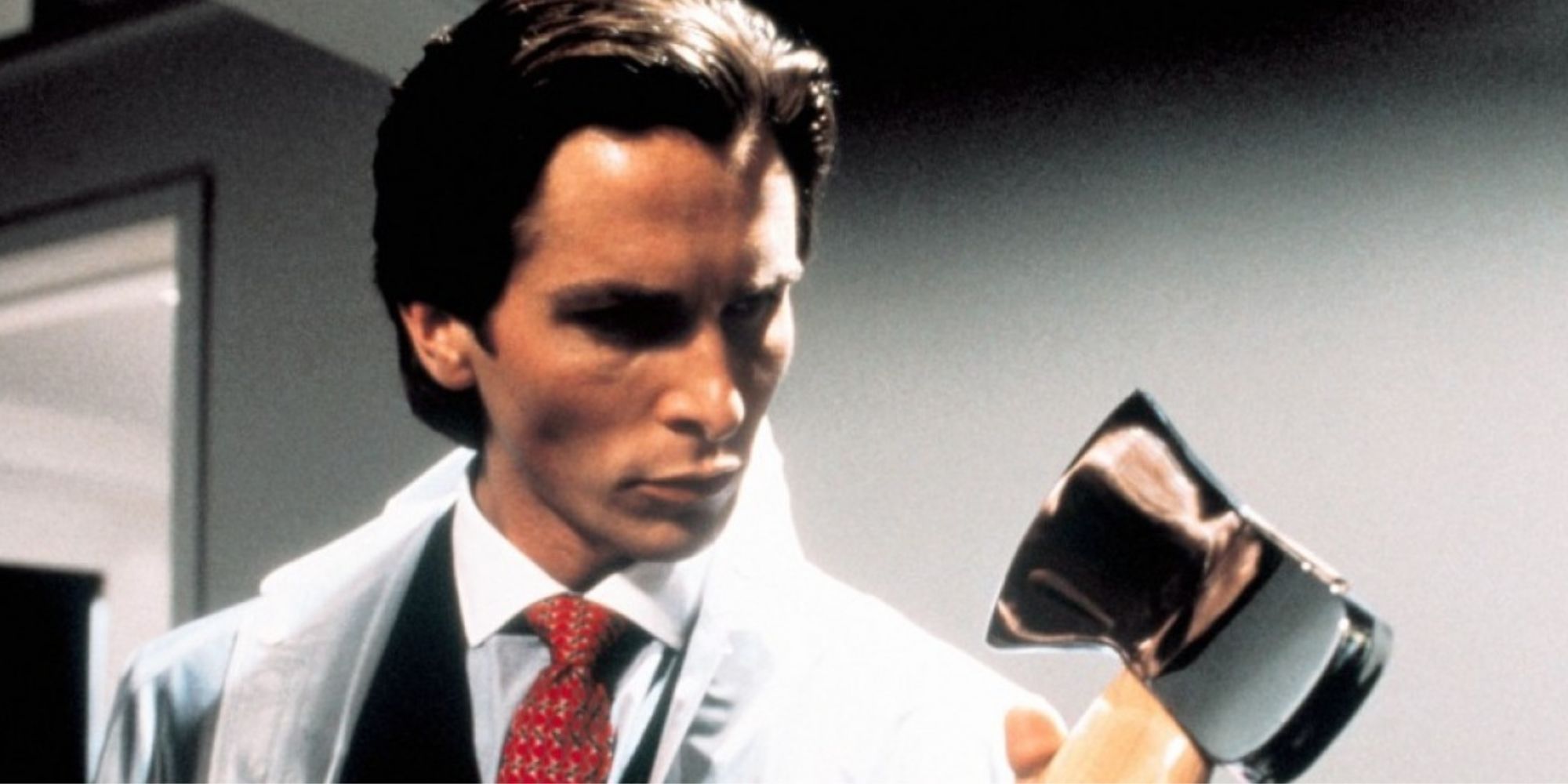 Image via Lionsgate
Image via Lionsgate Movies with ambiguous endings are built to keep us guessing, and American Psycho nails that perfectly. However, it’s in good company with some classics like the 1999 drama series, The Sopranos. Viewers were left hanging after the screen suddenly went black and, after seven seasons of watching Tony Soprano call the shots, we were left wondering — did he get whacked in that diner? We’ll never know, and that’s the point.
A similar kind of open-ended storytelling is used in Inception too, with Dom’s fate spinning alongside that top. Is he still dreaming, or did he finally wake up? We don’t know for sure because the film intentionally blurs the line between dream and reality. Overall, these films tap into a shared experience of uncertainty, and they force audiences to confront their own need for closure. More so, in American Psycho, that ambiguity is particularly chilling because it reflects the shallow, disconnected world Bateman lives in. It’s a world where no one is concentrating on anything other than themselves, so it doesn’t matter to them if a dozen or more people are murdered. At the end of the day, the ambiguity in these productions is not just a clever storytelling trick, but a core part of their message.
American Psycho is currently streaming on Peacock in the U.S.
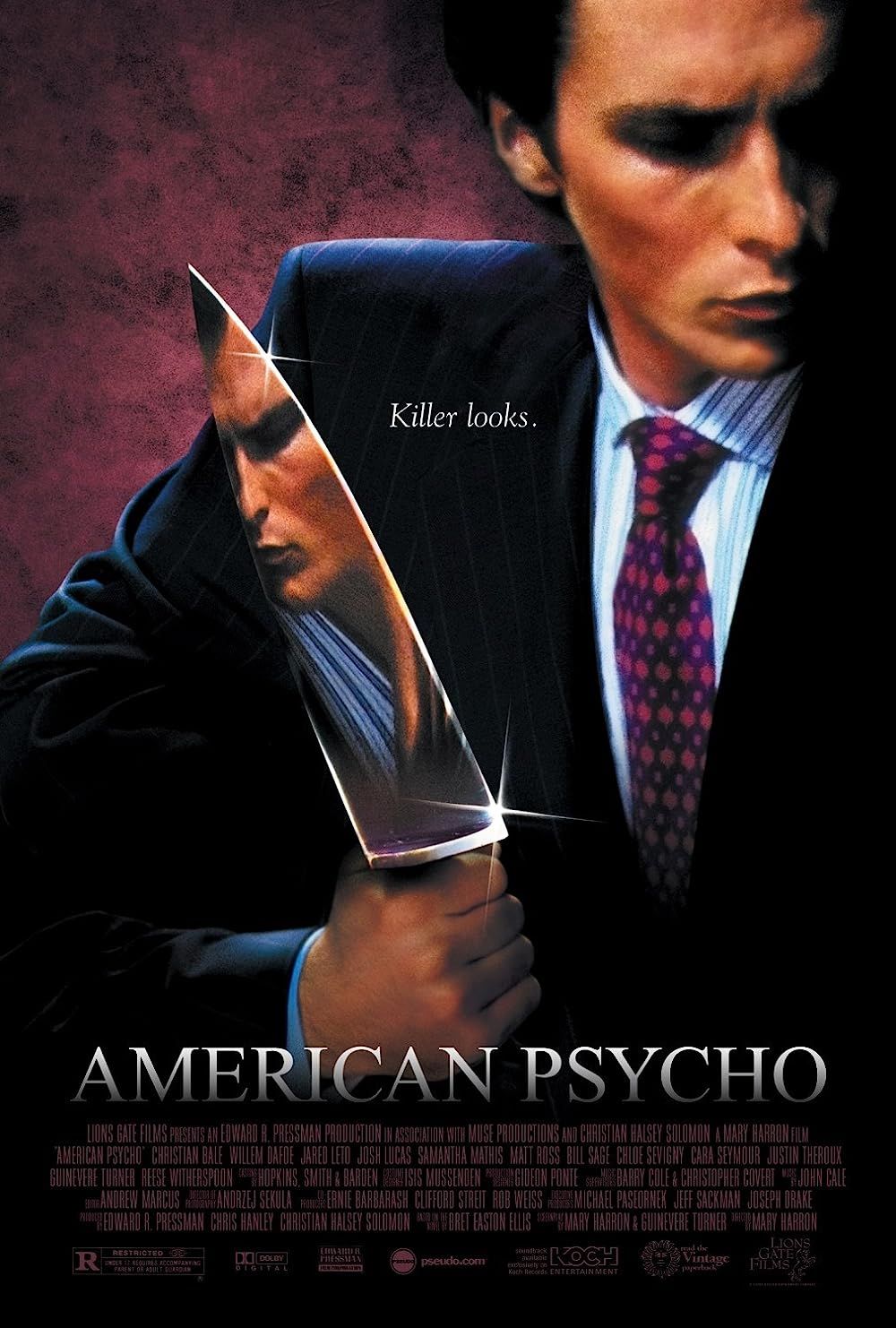
American Psycho
A wealthy New York City investment banking executive, Patrick Bateman, hides his alternate psychopathic ego from his co-workers and friends as he delves deeper into his violent, hedonistic fantasies.
Release Date April 13, 2000
Director Mary Harron
Runtime 102 mins
Main Genre Crime
Writers Bret Easton Ellis , Mary Harron , Guinevere Turner
Studio Lionsgate Films
.

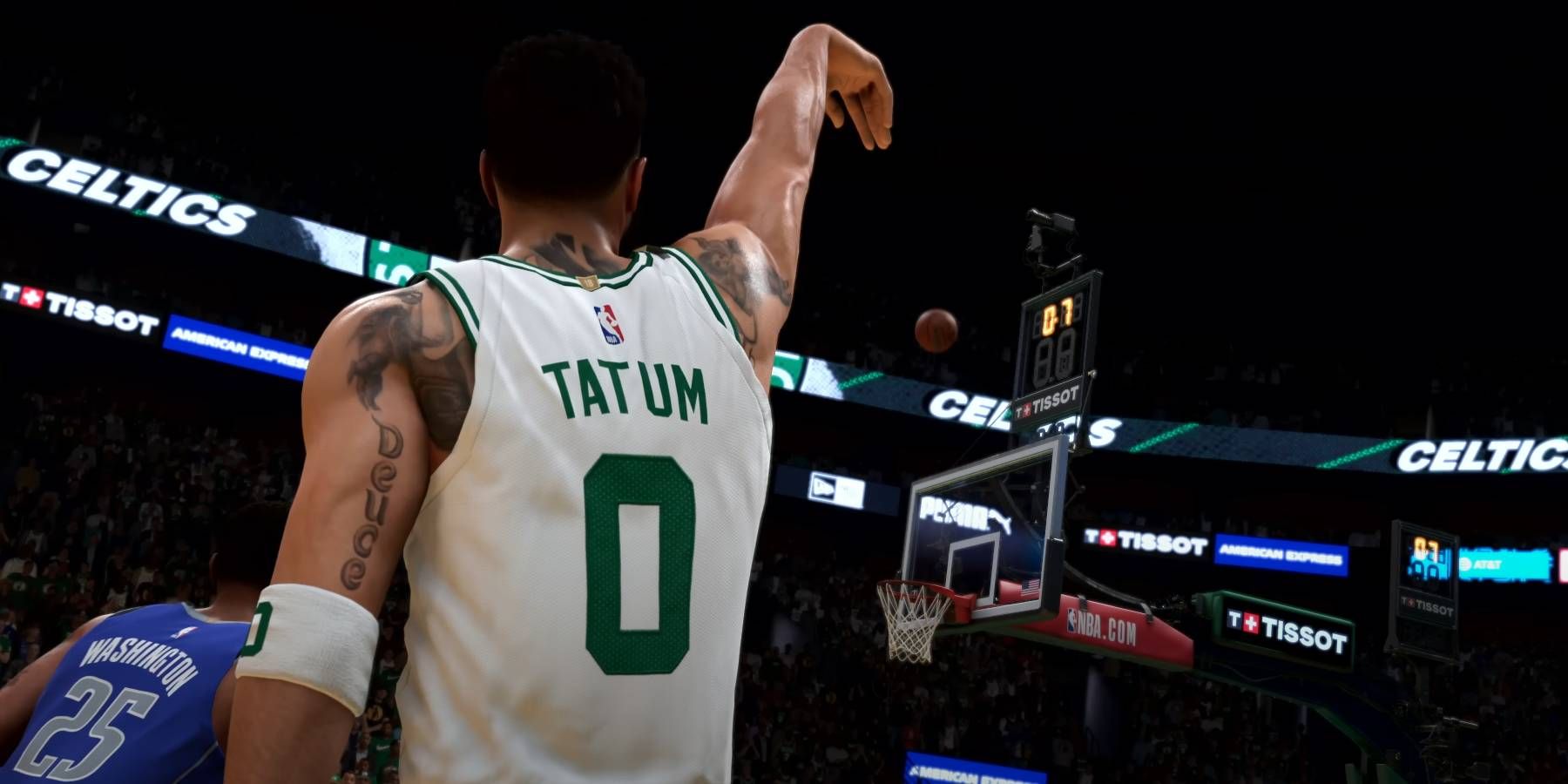

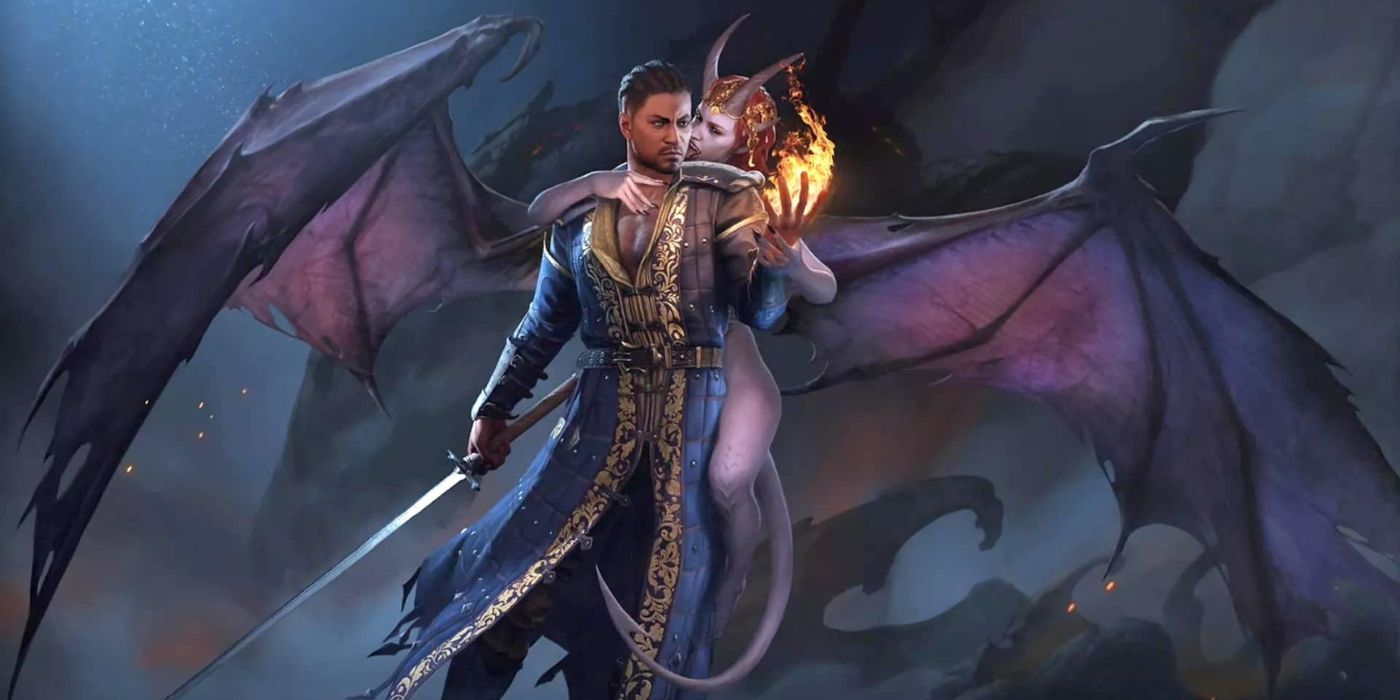


:quality(85):upscale()/2024/10/16/849/n/1922153/26bd557a671012b78458f6.94017011_.png)


 English (US) ·
English (US) ·